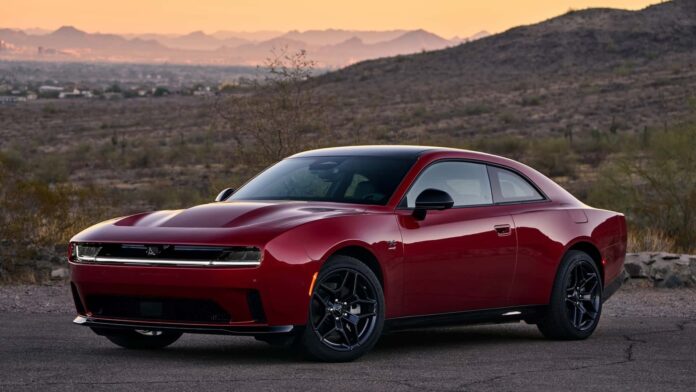
- Stellantis and Factorial Energy have validated a semi-solid state battery cell.
- The milestone brings the tech one step closer to commercialization.
- Factorial’s cells bring significant advantages in terms of range, charging speeds and weight reduction compared to traditional lithium-ion batteries.
Massachusetts-based battery startup Factorial is having a moment. After putting a Mercedes-Benz EQS with its solid-state tech on the road for testing, it’s now teamed up with Stellantis to announce a major milestone: successful validation of automotive-grade semi-solid-state battery cells.
Solid-state batteries—which use a solid or gel-like electrolyte instead of the liquid chemical used in traditional lithium-ion packs—are widely seen as the holy grail of EV tech. The potential upsides include dramatically more range, faster charging speeds, lighter weight and superior performance in extreme temperatures.
Stellantis and Factorial have validated a 77 amp-hour cell with an energy density of 375 watt hours per kilogram, which is more than the current industry average of between 200-300 Wh/kg. The cells can charge from 15-90% in just 18 minutes at room temperature and support discharge rates of up to 4C, meaning the battery can fully discharge four times in an hour.
That could unlock absurd levels of performance in EVs. That also explains why Stellantis chose the Dodge Charger Daytona as a host vehicle for the real-world testing of the advanced cells.
The operating temperature range for these cells is -22°F to 113°F, which isn’t too different from current lithium-ion batteries—but the key differentiator could be how much range they retain in those extremities. Lithium-ion batteries lose a substantial amount of energy in colder climates whereas solid-state batteries are expected to maintain most of their energy regardless of the climate.
27
Source: Patrick George
This breakthrough has been years in the making. Factorial’s relationship with Stellantis dates back to 2018—when it was still Fiat Chrysler Automobiles—and started with 20 Ah pouch cells before scaling up to 100 Ah. (Although the Stellantis cells are 77 Ah.)
“We went through production hell to scale up our operations,” Siyu Huang, the CEO of Factorial Energy, told InsideEvs in an interview. “It took us a long time, with a lot of scrap, plenty of material challenges and production yield challenges,” she added.
Huang then went on to show me the difference in size between the 20 Ah cells Factorial initially produced and the 100 Ah cells it has now pioneered. She held up the actual sample pouch cells that were in her office. The size difference was similar to that of an iPad and a full-size flatscreen TV.
However, the Stellantis cells are not all-solid-state (ASSB) units. They’re polymer-based semi-solid-state cells which focus on stabilizing the anode, the part of the cell where active material gets deposited during charging. This is more of an interim solution that could help pave the path towards ASSBs.
It’s also worth noting that Factorial’s cells in the Mercedes EQS and the Dodge Charger Daytona demo vehicles are substantially different. On the EQS, the cells are optimized for range and efficiency while the Daytona focuses more on performance—the chemistry however is identical.
If Factorial manages to solve scalability, both EVs will stand to benefit from weight savings—the Daytona more so than the EQS as it is an electric muscle car that currently has an absurd curb weight of 5,838 pounds.
Just on the pack level, these solid-state cells can help save 200 pounds of weight, Huang said. But because solid-state cells require far less structural bracing, less cooling, less thermal management and fewer overall components, the weight savings on the vehicle level can range from 500 to 2,000 pounds.
Going on a diet can also help with saving costs as every pound of weight loss saves about $5—something that’s a generally accepted metric among solid-state battery makers. Theoretically, companies can save $2,500-10,000 if progress continues as planned.
But Huang did not mince words when talking about the costs of these solid-state cells in their current state of development compared to lithium-ion batteries which have been widely commercialized. “They’re definitely more expensive on a small scale,” Huang said.
“The A-samples can be 10, 20 or even 30 times more expensive [than regular lithium-ion cells],” she added. Although she sounded cautiously optimistic about bringing costs down as the company scales up operations, and potentially even partners with big battery companies in the future for mass manufacturing.
Even China is going all in on the technology and these batteries can potentially solve all issues regarding range, safety, charging and longevity, according to her.
Instead of having several different solutions, “the most efficient solution is just to have one type of battery that can solve the problems for all,” she added.
Do you work in the EV battery industry and have a tip? Reach out to me at suvrat.kothari@insideevs.com or via the Signal app at suvratk.74 if you want to chat securely and anonymously.


